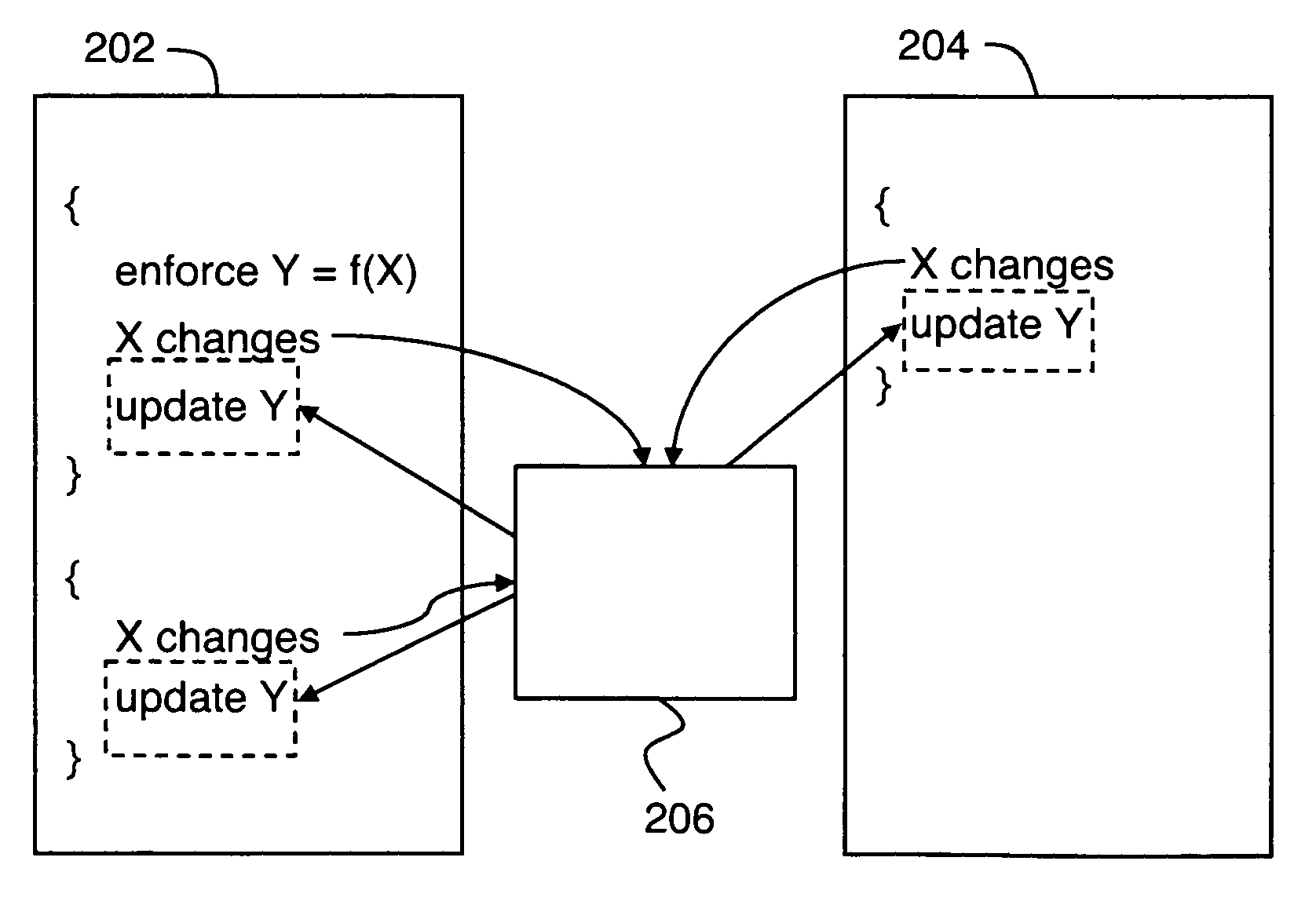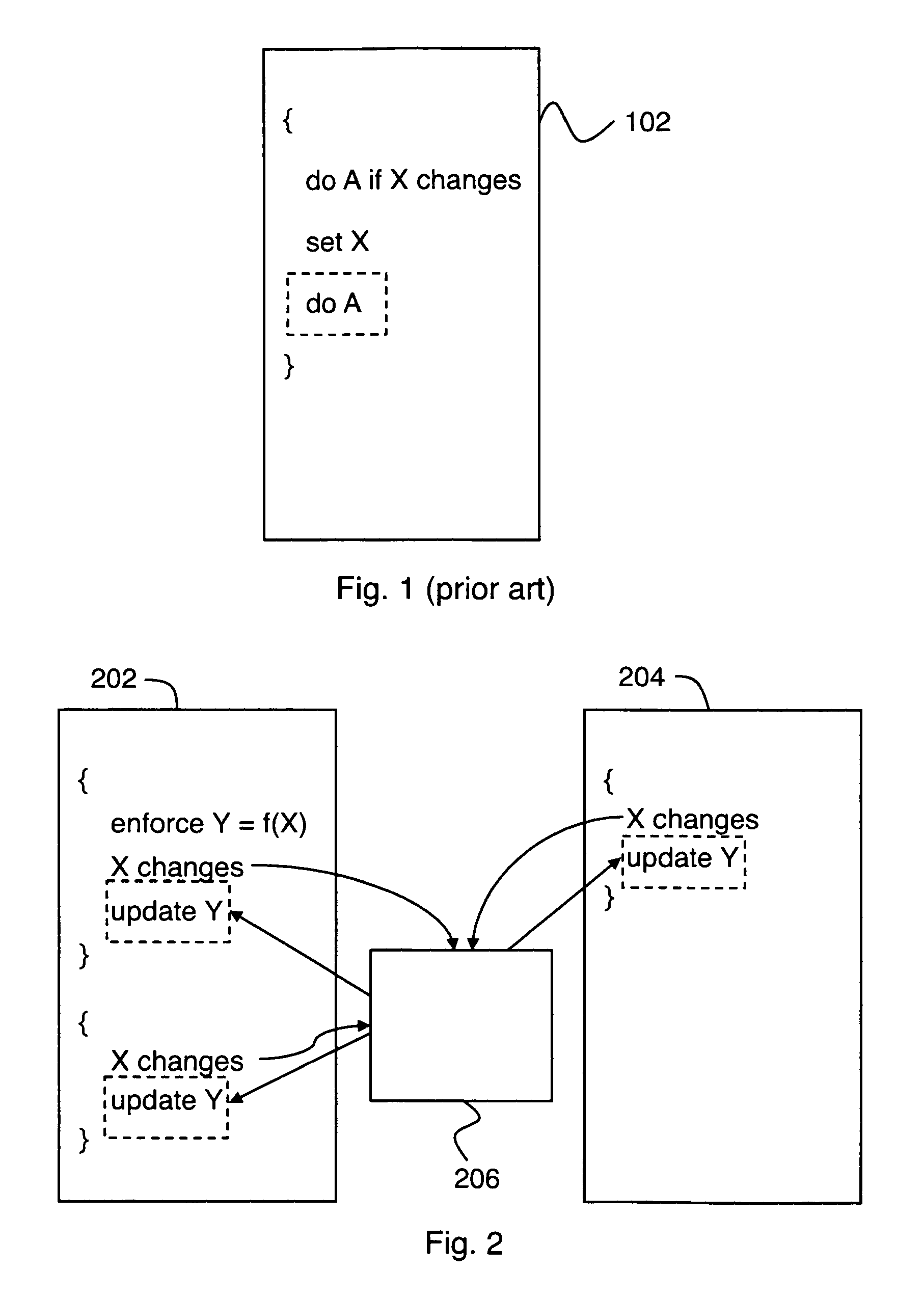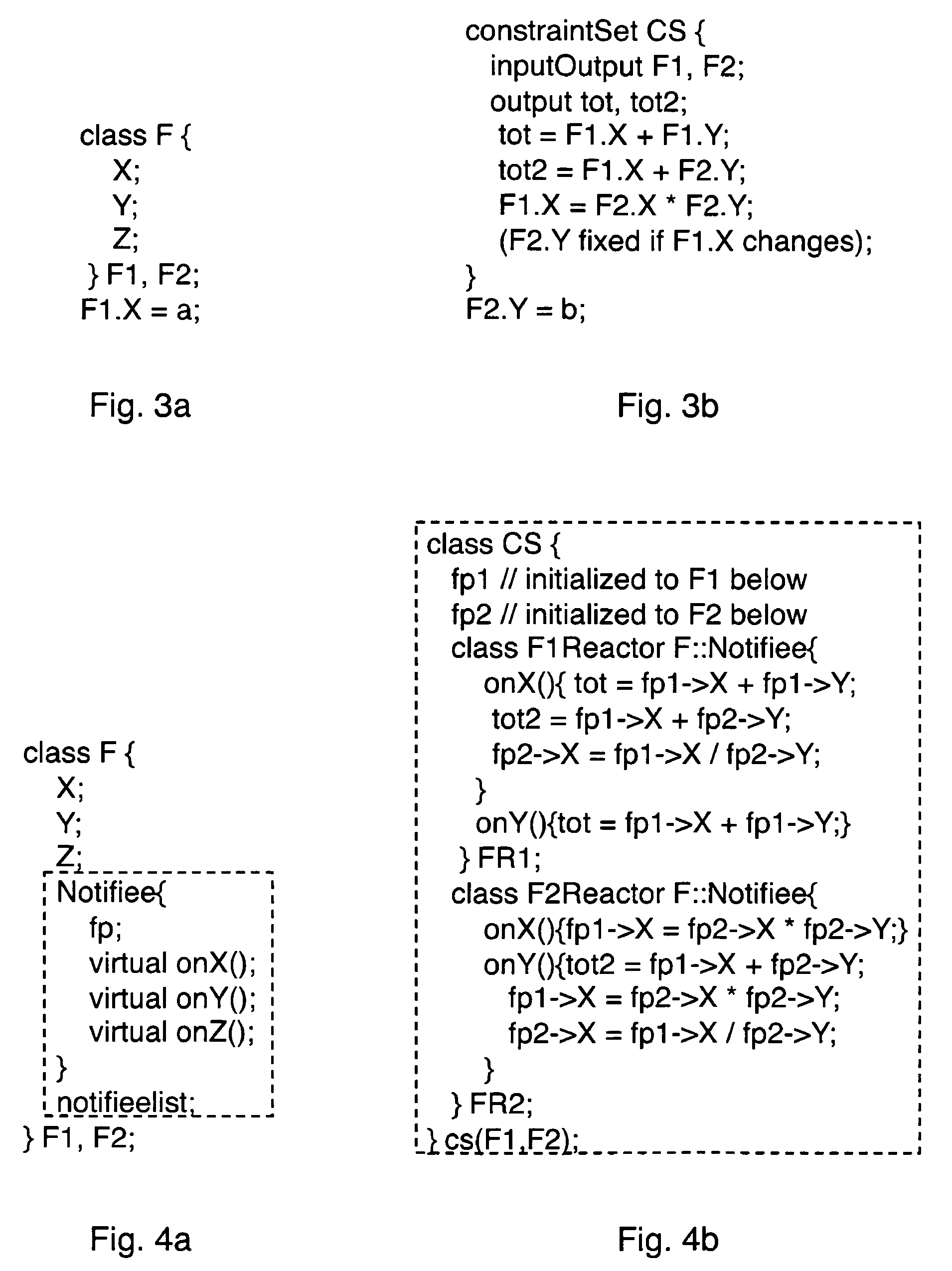Efficient automated translation of procedures in constraint-based language
a technology of constraint-based language and automatic translation, applied in the field of automatic translation of computer languages, can solve the problems of affecting software development, and affecting the development of softwar
- Summary
- Abstract
- Description
- Claims
- Application Information
AI Technical Summary
Benefits of technology
Problems solved by technology
Method used
Image
Examples
Embodiment Construction
[0091]In an embodiment of the invention, a programming language includes one or more constructs for specifying a set of constraints, referred to as a constraint set. By “constraint” is meant a declarative specification of a relationship between data members that is required to hold, either at all times or at a special time or times. In the former case, a constraint is equivalent in nature to an invariant. An example of the latter is a relationship that only holds on initialization of some data member. Another example is a constraint that refers to a data member in another object; the constraint can only hold when that other object is known. By “active constraint” is meant a constraint where imperative actions are taken to establish and maintain that relationship as state relevant to the relationship changes. In contrast to an active constraint, a passive or checking constraint simply generates an error or exception indication when the relationship is detected not to hold. The nature...
PUM
 Login to View More
Login to View More Abstract
Description
Claims
Application Information
 Login to View More
Login to View More - R&D
- Intellectual Property
- Life Sciences
- Materials
- Tech Scout
- Unparalleled Data Quality
- Higher Quality Content
- 60% Fewer Hallucinations
Browse by: Latest US Patents, China's latest patents, Technical Efficacy Thesaurus, Application Domain, Technology Topic, Popular Technical Reports.
© 2025 PatSnap. All rights reserved.Legal|Privacy policy|Modern Slavery Act Transparency Statement|Sitemap|About US| Contact US: help@patsnap.com



